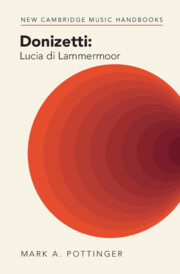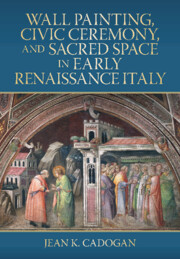Refine search
Actions for selected content:
642 results
Politicians’ misinformation, its correction, and partisanship in Italy
-
- Journal:
- Italian Political Science Review / Rivista Italiana di Scienza Politica , First View
- Published online by Cambridge University Press:
- 16 December 2025, pp. 1-14
-
- Article
-
- You have access
- Open access
- HTML
- Export citation
Chapter 2 - Public and Private Interests
-
- Book:
- The State, the Law, and the People in the Roman Empire
- Published online:
- 11 December 2025
- Print publication:
- 11 December 2025, pp 64-118
-
- Chapter
- Export citation
Marrying the occupiers: Italian war brides and GIs during the Allied occupation of Italy
-
- Journal:
- Modern Italy , First View
- Published online by Cambridge University Press:
- 21 November 2025, pp. 1-14
-
- Article
-
- You have access
- Open access
- HTML
- Export citation

Maddalena Casulana
- Music Advocating for Women in Early Modern Italy
-
- Published online:
- 20 November 2025
- Print publication:
- 04 December 2025
Chapter 11 - Twenty Questions about Employment Testing Bias and Unfairness in Italy
-
-
- Book:
- Global Perspectives on the Definition, Assessment, and Reduction of Bias and Unfairness in Employment Testing
- Published online:
- 04 November 2025
- Print publication:
- 20 November 2025, pp 231-248
-
- Chapter
- Export citation
Safavid Wars and Italian Archives: Shedding Light on Italian Knowledge of Ottoman-Safavid Conflicts
-
- Journal:
- Iranian Studies ,
- Published online by Cambridge University Press:
- 10 November 2025, pp. 1-18
-
- Article
-
- You have access
- Open access
- HTML
- Export citation

Donizetti: Lucia di Lammermoor
-
- Published online:
- 06 November 2025
- Print publication:
- 23 October 2025
5 - A Theory of Ownership and Custody of Cultural Objects
- from Part II - The Legal Future of Cultural Property
-
- Book:
- Cultural Property
- Published online:
- 05 November 2025
- Print publication:
- 30 October 2025, pp 193-229
-
- Chapter
- Export citation
7 - Reception and Legacy
-
- Book:
- Donizetti: Lucia di Lammermoor
- Published online:
- 06 November 2025
- Print publication:
- 23 October 2025, pp 156-176
-
- Chapter
- Export citation
1 - Source Studies
-
- Book:
- Donizetti: Lucia di Lammermoor
- Published online:
- 06 November 2025
- Print publication:
- 23 October 2025, pp 1-33
-
- Chapter
- Export citation
Tuberculosis mortality and industrialisation in Italy, 1891-1951
-
- Journal:
- Revista de Historia Economica - Journal of Iberian and Latin American Economic History , First View
- Published online by Cambridge University Press:
- 22 October 2025, pp. 1-28
-
- Article
- Export citation
Chapter 20 - Italy
- from France, Italy, and Iberia
-
-
- Book:
- The Cambridge Guide to Global Medieval Travel Writing
- Published online:
- 03 October 2025
- Print publication:
- 02 October 2025, pp 356-374
-
- Chapter
- Export citation
Chapter 18 - The Renaissance
- from Part III - In the Name of Time
-
-
- Book:
- Michael Field in Context
- Published online:
- 03 October 2025
- Print publication:
- 25 September 2025, pp 163-171
-
- Chapter
- Export citation
Preparing for disaster: the Seveso directive, infringements and societal mobilisation of European law, 1976–2000
-
- Journal:
- European Law Open / Volume 4 / Issue 3 / September 2025
- Published online by Cambridge University Press:
- 22 September 2025, pp. 518-535
-
- Article
-
- You have access
- Open access
- HTML
- Export citation

Wall Painting, Civic Ceremony, and Sacred Space in Early Renaissance Italy
-
- Published online:
- 19 September 2025
- Print publication:
- 23 October 2025
The government–parliament relationship in times of pandemic: the case of Italy
-
- Journal:
- Italian Political Science Review / Rivista Italiana di Scienza Politica , First View
- Published online by Cambridge University Press:
- 12 September 2025, pp. 1-18
-
- Article
-
- You have access
- Open access
- HTML
- Export citation
The role of the Banca Nazionale del Lavoro (BNL) in Fascist Italy’s economic strategy towards Franco’s Spain, 1936–43
-
- Journal:
- Modern Italy , First View
- Published online by Cambridge University Press:
- 12 September 2025, pp. 1-20
-
- Article
-
- You have access
- Open access
- HTML
- Export citation
Italian cross-cultural adaptation of the EveryONE Social Needs Screening Tool of social determinants of health in primary care
-
- Journal:
- Primary Health Care Research & Development / Volume 26 / 2025
- Published online by Cambridge University Press:
- 04 September 2025, e76
-
- Article
-
- You have access
- Open access
- HTML
- Export citation
The Chinese identity of St Mark’s bronze ‘Lion’ and its place in the history of medieval Venice
-
- Article
-
- You have access
- Open access
- HTML
- Export citation
2 - ‘That most imperfect military organization’
- from Part I - The Ascent
-
- Book:
- The Generalissimo
- Published online:
- 31 July 2025
- Print publication:
- 14 August 2025, pp 43-65
-
- Chapter
- Export citation
